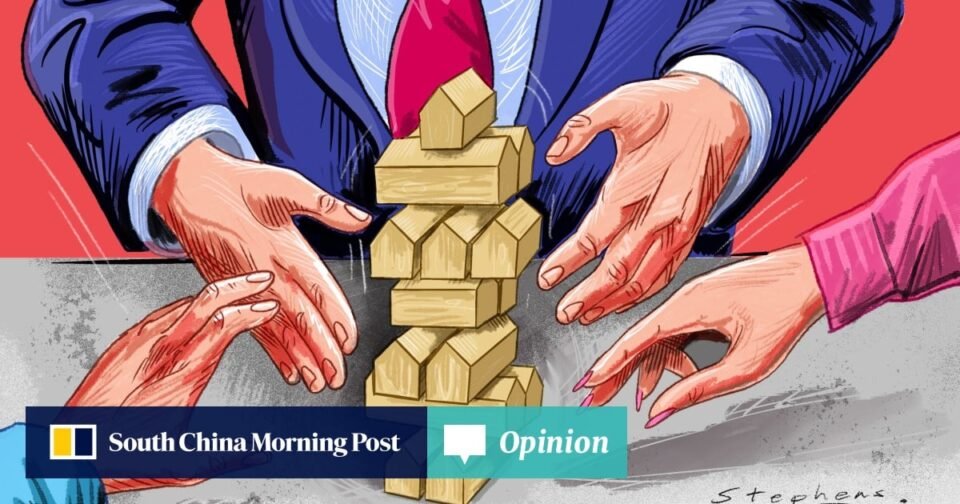There are two signs of significant oversupply in residential markets, according to economist Gao Shanwen, who based his work on data from economies including Japan and the United States.
The second is when investments in residential property development represent more than 7 per cent of a country’s gross domestic product. In China, this ratio hit about 12 per cent in 2013 but has fallen since, and is expected to be around 5.5 per cent this year.
Therefore, Gao concludes, while there is a significant overcorrection in China’s residential property development sector, there is no oversupply in the housing market. The market correction has been so severe it has tipped over into an overcorrection.
China’s housing crisis isn’t over.
Beijing, Shanghai among casualties as China’s pre-owned home prices slip again
Beijing, Shanghai among casualties as China’s pre-owned home prices slip again
Will China’s housing sector woes lead to a financial crisis like in the US and Europe in 2008? The answer is no, for two reasons.
First, the average loan-to-value ratio of home mortgages in China’s major cities is about 50 per cent, which means that housing prices will have to fall by more than half to put mortgages at risk. That is not even remotely likely, and the ratio of non-performing housing loans among Chinese banks remains below 1 per cent, according to ratings agency S&P.
Second, home loans are unlimited personal liabilities in China, so homeowners cannot simply walk away from them as one can in the US. So defaults are rare.
Third, banks’ exposure to developers represents less than 5 per cent of their loan book, all of which is collateralised. Chinese banks are well-capitalised, with an average capital adequacy ratio of more than 15 per cent, and an average non-performing loan ratio of about 1.6 per cent.
Indeed, China’s banking system faces a unique problem of having too much cash. Household deposits increased by 18 trillion yuan (US$2.5 trillion) in 2022 and a further 17 trillion yuan last year as consumers continue to hold back.
But the housing crisis continues to retard China’s economic recovery. The property sector’s contribution to gross domestic growth was a negative 4 per cent in 2022. The good news is that this recovered to a negative 1.3 per cent last year and is expected to further improve to a negative 0.9 per cent this year, according to UBS.
The prevailing view of China’s property market is that the housing crisis was inevitable, driven by the bursting of a property bubble and the immutable laws of supply and demand. In fact, it was largely policy-induced, as the government took measures to cool down the overheated sector by limiting purchases and controlling prices, mortgages and credit to developers.
Why China needs urgent reform to revive middle-class prosperity
Why China needs urgent reform to revive middle-class prosperity
The latent demand for housing is substantial. Chinese have always considered residential properties the most preferred asset class to invest in. Whereas in the US, residential properties represent only about 25 per cent of household wealth, this ratio is about 59 per cent in China.
China is on track to increase its urbanisation rate from around 65 per cent now to 73 per cent by 2035, which will add more than 100 million people to the urban population – all of whom require housing.
Weijian Shan is Executive Chairman of PAG, a private equity firm, and the author of “Out of the Gobi”, “Money Games” and “Money Machine”



